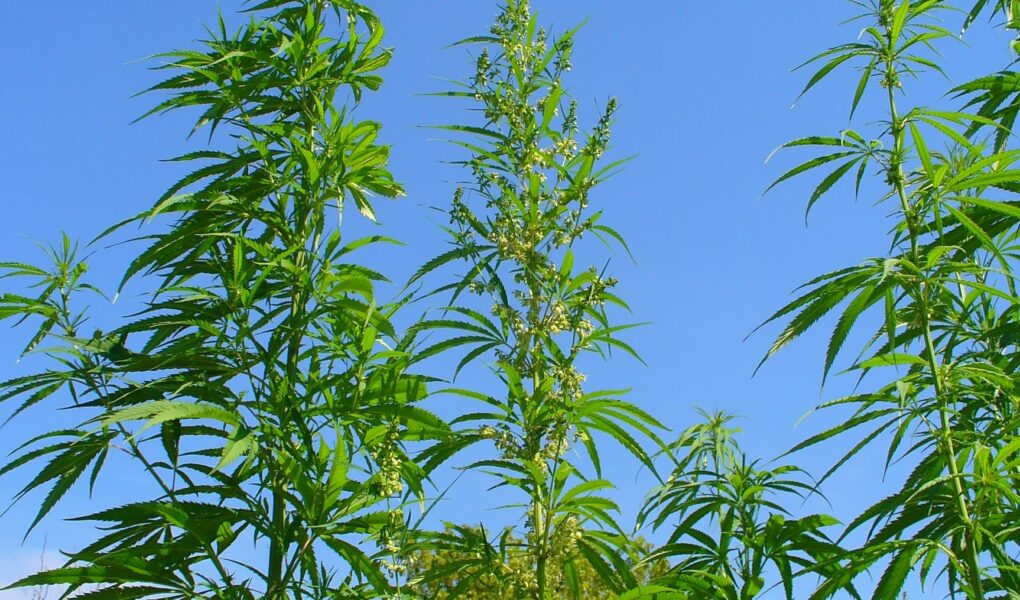Title: The Green Tapestry: Unraveling the Threads of Cannabis in India
As the sun rises over the diverse landscapes of India, it illuminates a complex relationship that has long woven itself into the fabric of the nation: cannabis. From ancient rituals to modern discussions, the journey of this remarkable plant is as intricate as the cultures and histories it intersects. In India, cannabis has been revered for thousands of years, celebrated in sacred texts and traditional practices, yet it has also faced periods of stigma and prohibition. Today, as the global perspective on cannabis shifts and evolves, India finds itself at a crossroads, navigating the fine line between heritage and modernization. This article delves into the rich tapestry of cannabis in India, exploring its historical significance, cultural implications, and the burgeoning conversations surrounding its legal status and medicinal potential. Join us as we embark on this exploration of a multifaceted plant that continues to inspire debate, curiosity, and possibility.
Table of Contents
- Exploring the Evolving Landscape of Cannabis Legislation in India
- Cultural Connections: The Historical Significance of Cannabis in Indian Traditions
- Health and Wellness: Evaluating Medical Cannabis Potential in India
- Navigating the Market: Recommendations for Responsible Cannabis Use and Cultivation
- Q&A
- In Summary
Exploring the Evolving Landscape of Cannabis Legislation in India
The landscape of cannabis legislation in India is undergoing a significant transformation, reflecting a shift in public perception and political attitudes. As discussions around legalization gain momentum, various states are investigating the potential medicinal and economic benefits of cannabis. Advocates for reform argue that a regulated cannabis market could lead to substantial tax revenues, job creation, and a reduction in criminal activities associated with the illegal trade. Many citizens are beginning to view cannabis not merely as a recreational substance but as a potential therapeutic agent, especially in treating conditions like chronic pain, anxiety, and epilepsy.
However, the regulatory journey remains complex, influenced by a historical backdrop steeped in stigma and prohibition. The Indian government has been cautious, often aligning policy decisions with international drug control treaties. As states like Uttarakhand and Himachal Pradesh experiment with cultivating hemp for industrial use, the legal framework is slowly adapting. Studies show that public support for cannabis legalization is growing, fueled by changing social norms and the global trend toward decriminalization. The following table illustrates the current state of cannabis legislation across select Indian states:
| State | Status of Legislation | Purpose |
|---|---|---|
| Uttarakhand | Legalized for industrial hemp | Industrial use and revenue generation |
| Himachal Pradesh | Proposed legislation | Medicinal research and cultivation |
| Maharashtra | Ongoing discussions | Potential decriminalization |
| Delhi | Strictly prohibited | Pending public sentiment change |
Cultural Connections: The Historical Significance of Cannabis in Indian Traditions
Cannabis, known as Bhang in the Indian subcontinent, has deep roots in the cultural and spiritual fabric of the region. Historical texts, including the ancient scriptures of Ayurveda, extol its therapeutic properties and suggest its use in religious rituals. As part of ceremonial practices, Bhang is often consumed during festivals like Maha Shivaratri and Holi, where it symbolizes renewal and the liberation of the spirit. The plant is frequently associated with Lord Shiva, who is believed to have used it for meditation, further embedding its significance into the spiritual practices of millions.
Across India, the use of cannabis extends beyond religious contexts into social and traditional realms. It is celebrated for its role in various traditional dishes and beverages, contributing to the region’s rich culinary diversity. Notably, Bhang Lassi is a popular drink that brings communities together during festivals, representing hospitality and shared joy. The significance of cannabis is further reflected in folk songs, art, and local traditions, making it a vibrant symbol of cultural heritage. Today, as discussions around cannabis legalization and its benefits gain momentum, it is essential to recognize its historical significance and the role it plays in bridging ancient traditions with contemporary society.
Health and Wellness: Evaluating Medical Cannabis Potential in India
The evolving landscape of healthcare in India has opened doors for exploring alternative therapies, including medical cannabis, which could play a significant role in the wellness sector. As research highlights the therapeutic potential of cannabinoids, the country faces a crucial decision: embrace or resist this trend. Benefits of medical cannabis are garnering attention, particularly in the treatment of chronic pain, epilepsy, and mental health issues. Stakeholders are now investigating how regulation and cultivation can align with traditional Ayurvedic practices to formulate holistic treatments that respect cultural beliefs while harnessing scientific advancements.
To facilitate informed discussions and policy-making, it is essential to consider the diverse perspectives surrounding medical cannabis. Various groups, from healthcare professionals to policymakers, must weigh the potential advantages and concerns associated with legalization. Key factors influencing this debate include:
- Research Advancements: Emerging studies illustrating efficacy.
- Public Health Implications: Understanding both benefits and risks.
- Cultural Acceptance: Aligning with Indian medicinal traditions.
- Regulatory Frameworks: Ensuring safe and responsible usage.
Establishing a comprehensive regulatory framework is vital for responsibly integrating medical cannabis into India’s healthcare system. The following table summarizes key considerations:
| Aspect | Considerations |
|---|---|
| Legal Status | Review of existing laws and potential reforms. |
| Research Funding | Encouraging studies on safety and efficacy. |
| Education | Training healthcare providers on usage guidelines. |
| Public Awareness | Campaigns to inform on benefits and risks. |
Navigating the Market: Recommendations for Responsible Cannabis Use and Cultivation
As the cannabis market continues to evolve, it’s vital to prioritize responsible use and cultivation practices. Individuals interested in exploring cannabis should consider the following essential guidelines to ensure a safe and enjoyable experience:
- Understand the Legalities: Familiarize yourself with local laws and regulations regarding cannabis use, possession, and cultivation.
- Choose Quality Products: Opt for reputable suppliers and brands that prioritize quality and safety in their cannabis offerings.
- Start Small: If you’re new to cannabis, begin with small doses to gauge your tolerance and experience.
- Be Mindful of Your Environment: Use cannabis in safe, private spaces where you’re comfortable and won’t disturb others.
- Educate Yourself: Take the time to learn about different strains, methods of consumption, and potential effects.
Responsible cultivation is equally important, both for personal use and community health. For those looking to grow cannabis, consider these practices:
- Research Best Practices: Educate yourself on sustainable gardening techniques that promote healthy plants and minimize environmental impact.
- Use Organic Nutrients: Opt for organic fertilizers and pest control methods to keep your garden free from harmful chemicals.
- Respect Space and Resources: Cultivate in designated areas to avoid overcrowding and deplete local resources.
- Label and Document: Keep track of your plants with proper labels and notes on their growth, strain specifics, and any treatments used.
- Engage with Community: Join local gardening groups or forums to share knowledge, experiences, and tips on responsible cultivation.
Q&A
Q&A: Understanding Cannabis in India
Q: What is the historical significance of cannabis in India?
A: Cannabis has a long and rich history in India, often referred to as “bhang.” It is believed to have been used for thousands of years, mentioned in ancient texts like the Atharva Veda, where it is celebrated for its medicinal and spiritual properties. The plant was traditionally associated with various religious practices, particularly in Hindu rituals.
Q: How is cannabis utilized in Indian culture today?
A: Today, cannabis is still an integral part of certain cultural and religious practices. Bhang, a preparation made from cannabis leaves, is commonly consumed during festivals like Holi and Mahashivaratri. Additionally, the plant is traditionally used in Ayurvedic practices for its purported health benefits, addressing ailments ranging from anxiety to chronic pain.
Q: What is the legal status of cannabis in India?
A: The legal landscape of cannabis in India is complex. While the Narcotic Drugs and Psychotropic Substances Act of 1985 prohibits the production, sale, and possession of cannabis resin and flowers, the leaves and seeds are decriminalized in certain states. This duality often leads to confusion about its legal status, and enforcement can vary widely by region.
Q: Are there any medicinal applications of cannabis being explored in India?
A: Yes, there is a growing interest in the medicinal properties of cannabis in India. Researchers and Ayurvedic practitioners are investigating its potential to treat various health conditions, including epilepsy, chronic pain, and stress-related disorders. However, scientific research in this area is still in its nascent stages, and there are calls for more systematic studies.
Q: How is the perception of cannabis evolving in Indian society?
A: The perception of cannabis in India is gradually changing, particularly among younger generations. Increasing awareness of its medicinal benefits, coupled with global trends towards legalization and decriminalization, is prompting discussions about its potential uses beyond traditional practices. However, stigma remains, rooted in historical associations with substance abuse.
Q: What challenges does the cannabis industry face in India?
A: The cannabis industry in India grapples with significant challenges, including stringent regulations, limited research funding, and the societal stigma surrounding the plant. Entrepreneurs and advocates are pushing for a more progressive approach to cannabis, urging reforms that recognize its cultural, medicinal, and economic potential.
Q: What does the future hold for cannabis in India?
A: The future of cannabis in India appears to be on the brink of transformation. As public awareness grows and more voices advocate for legalization and regulation, there may be shifts in policy. With potential economic benefits on the horizon, the conversation surrounding cannabis is likely to evolve, paving the way for a more informed and balanced approach to this ancient plant.
Q: How can individuals engage with the ongoing conversation about cannabis in India?
A: Individuals can engage with this conversation by staying informed, advocating for responsible policies, participating in local discussions, and supporting research initiatives. Awareness and education play vital roles in shaping perceptions, and every voice contributes to the broader dialogue about cannabis in Indian society.
This Q&A aims to provide a comprehensive overview of the nuanced relationship between cannabis and Indian culture, law, and society, while maintaining a neutral and informative tone.
In Summary
As we navigate the evolving landscape of cannabis in India, it becomes clear that this ancient plant holds a complex and multifaceted place in our society. From its historical roots in traditional practices to its modern-day implications in health, economics, and law, cannabis presents both opportunities and challenges. The cultural tapestry of India, rich in diversity and tradition, continues to reveal the nuanced perceptions surrounding this herb.
As conversations about legalization, regulation, and responsible use gain momentum, it is essential for stakeholders — from policymakers to citizens — to foster an informed dialogue that respects cultural sensitivities while embracing scientific advancements. The future of cannabis in India remains unwritten, but by understanding its past and present, we can contribute to a balanced narrative that honors both heritage and innovation.
In this ongoing journey of discovery and re-evaluation, let us approach the topic with openness and curiosity, mindful that the decisions made today will shape the landscapes of tomorrow. Whether as a tool for healing, a source of income, or simply as an element of cultural expression, cannabis in India is a story still waiting to unfold.


